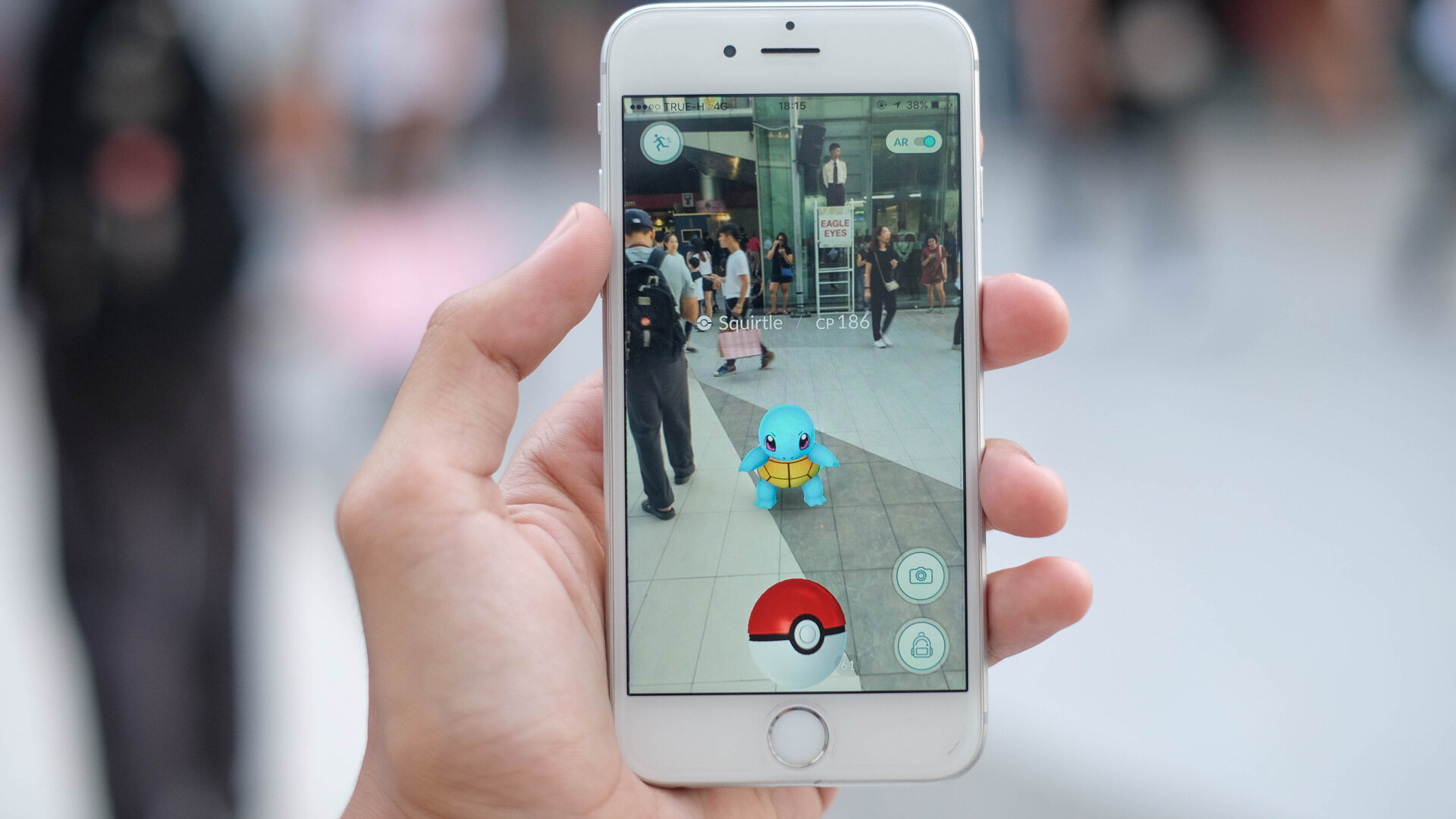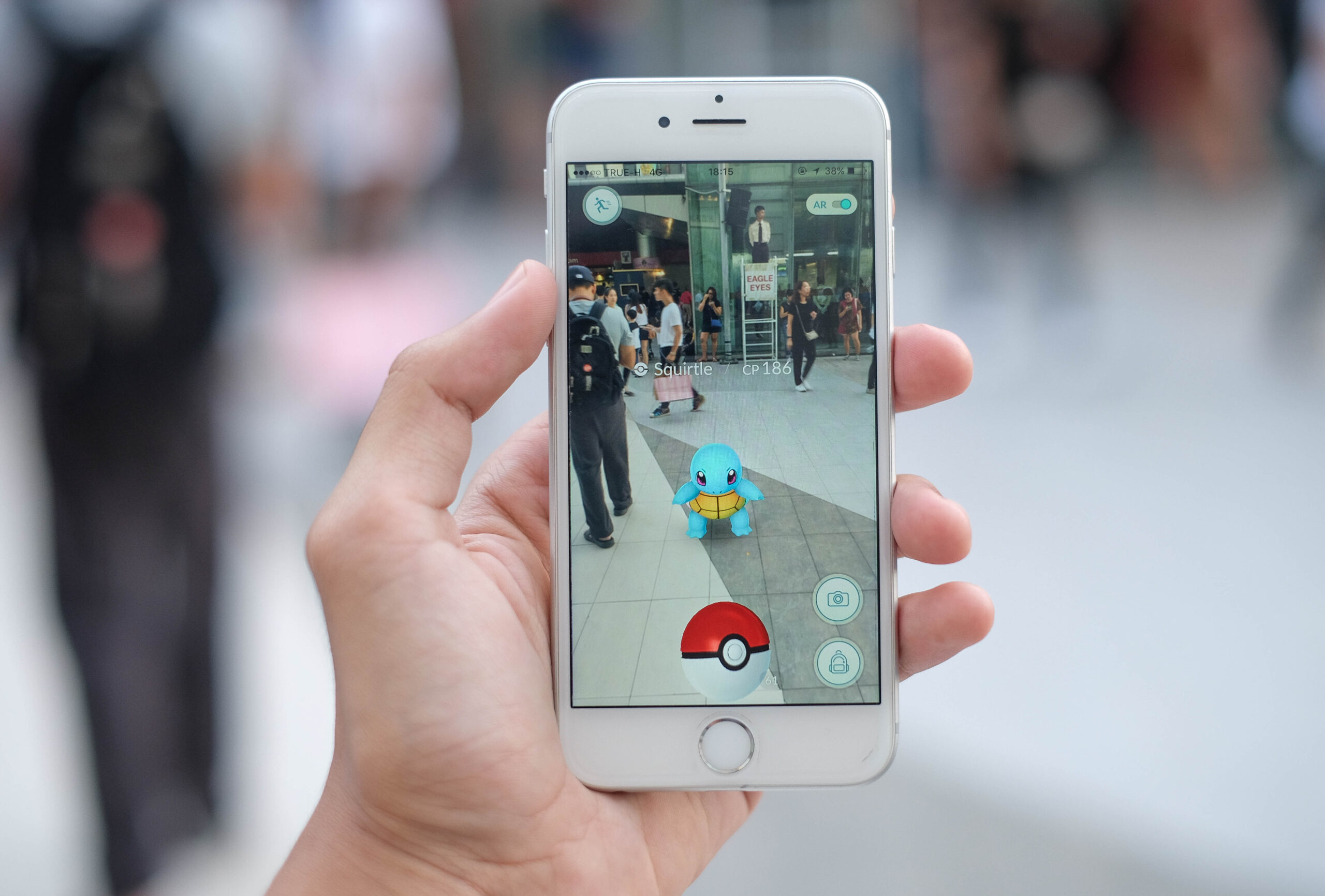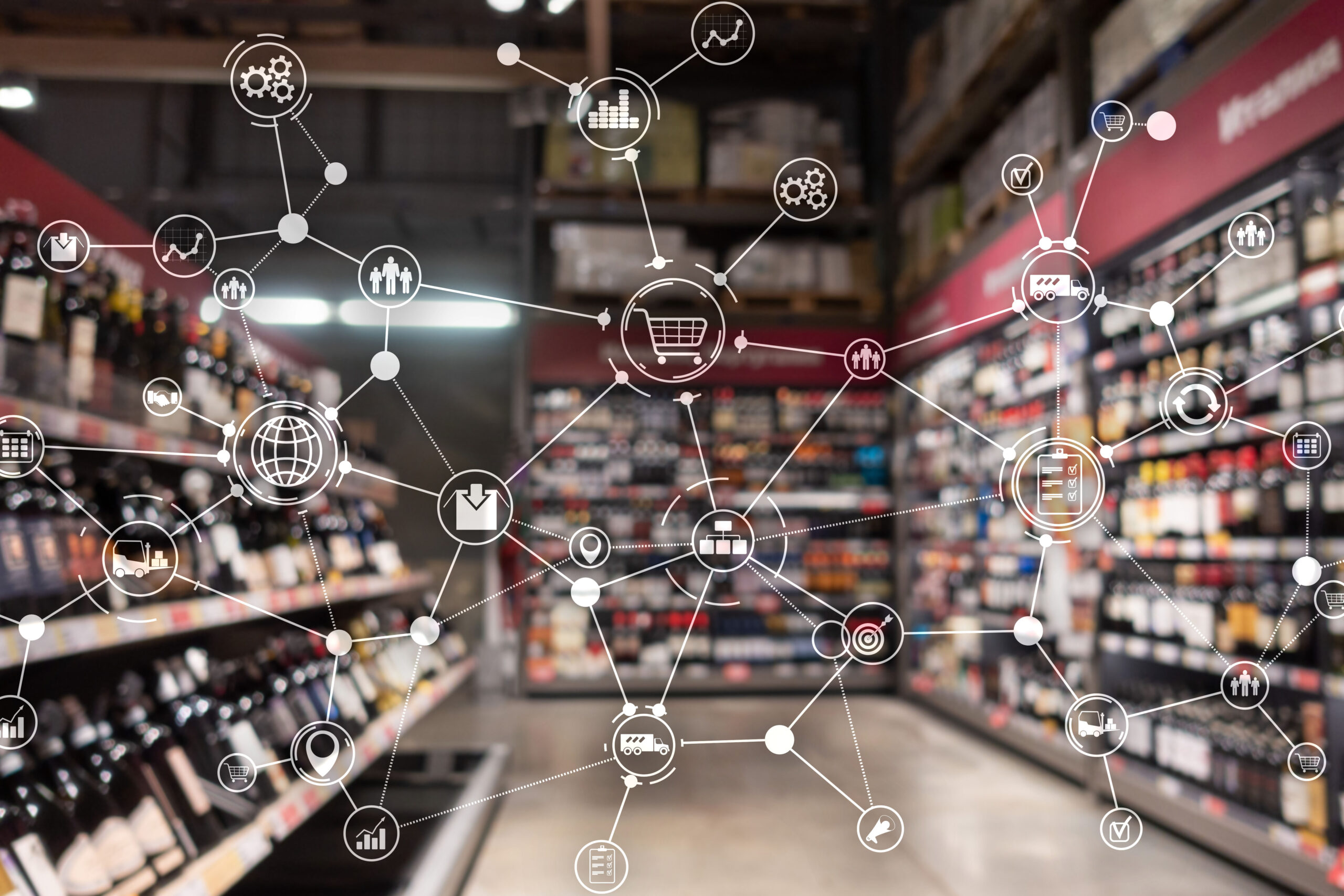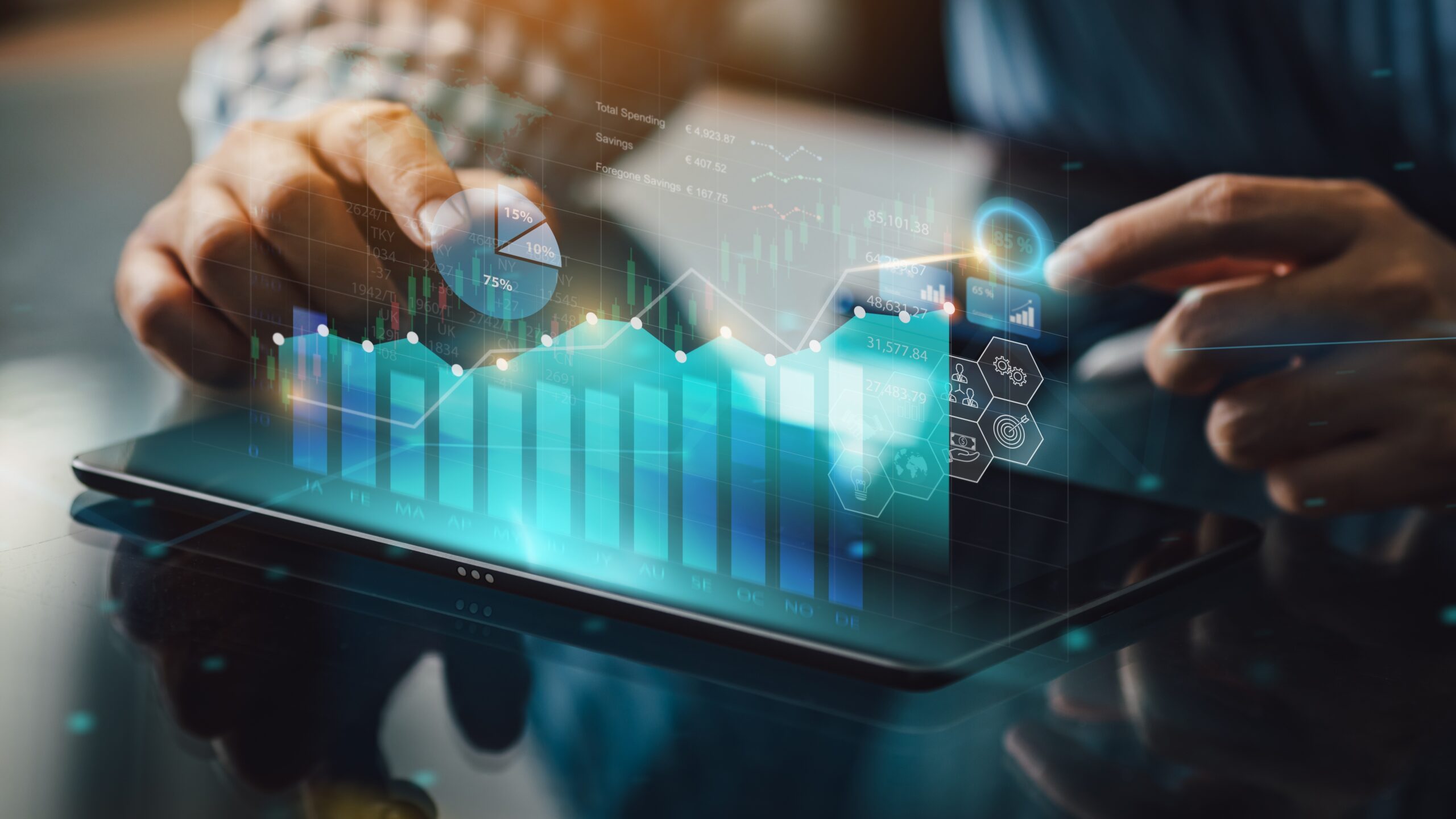Do you remember seeing people exploring their neighborhoods, smartphone in hand, chasing virtual creatures in Pokémon Go? Or maybe you’ve experienced the magic of a VR headset that plunged you into a whole new universe? If these adventures ring a bell, you’ve already tasted some of the excitement of extended reality. But what is extended reality, exactly?
Extended reality (XR) is an emerging technology poised to transform many industries, including healthcare, real estate, and retail. XR refers to immersive digital experiences that blend the physical and virtual worlds. This umbrella term encompasses augmented reality (AR), virtual reality (VR), and mixed reality (MR).
Yet XR is so much more than just video games and fun walk-throughs. From virtual try-ons to interactive in-store displays, these technologies are creating more personalized, memorable shopping journeys. For retailers, XR enables new digital avenues for engaging and converting customers, and more efficient workflows.
This article will explore extended reality, its retail applications, and real-world examples. We’ll also review some implementation challenges and the future outlook for this technology. Join us as we examine the promise of XR for modern retailers seeking to meet rising customer expectations.
Extended reality explained
Extended reality integrates real and virtual environments, creating immersive digital experiences. In retail, XR allows customers to try on clothes, view 3D product models, and explore interactive in-store displays virtually. These technologies are transforming traditional brick-and-mortar and e-commerce models.
If you’ve heard terms like AR, VR, and MR being thrown around but aren’t exactly sure what they mean—don’t worry! These seemingly complex terms are relatively simple to understand and come together to form XR.
Virtual reality (VR)
When it comes to VR, most people report the feeling of being transported to an entirely different place. It transforms your surroundings into a 3D environment where you can explore freely.
Virtual reality fully immerses users in a computer-generated, three-dimensional environment and shuts out the physical world using head-mounted displays like Meta’s Oculus Quest, and hand controllers allow natural interactions with the virtual environment. VR is especially popular for gaming, simulations, and training.
One of the widespread use cases for VR so far is the video game industry. Niches like VR gaming already employ this technology to create more captivating consumer experiences. VR technology provides an interactive and visually compelling environment for users to engage with.
However, the gaming industry is one of many seeing the benefits. In retail, VR allows potential buyers to explore products and experience services within simulated settings from any corner of the world. Imagine having customers “walk around” your grocery store to try a new layout without leaving their homes!
Augmented reality (AR)
Let’s return to the Pokémon Go phenomenon example. Within a week of its release, public spaces were flooded with people trying to “catch” virtual creatures overlaid on the real-world through smartphone screens. This craze gave everybody a firsthand experience with AR, and continues to be popular today. It demonstrates its ability to seamlessly blend digital objects with a real-world environment.
Augmented reality overlays digital information and objects onto the physical world. The exciting aspect of AR is that it can work using nothing but a mobile device with a camera.
From a retail perspective, AR opens new doors for creating immersive customer experiences without requiring individuals to be physically present within store premises. It’s perfect when you want to see how that coffee table would look in your living room before making an actual purchase. Or when you’re curious whether a particular shade of lipstick suits your skin tone without trying it on. Many retailers including IKEA, Sephora, Target and others have implemented AR apps and technology to help sell their products.
Mixed reality (MR)
Mixed reality seamlessly integrates real and virtual worlds, where physical and digital objects can interact. MR headsets like Microsoft’s HoloLens allow users to place 3D holographic objects in physical spaces, where hand and eye-tracking create natural controls.
MR retail applications include overlaying digital product information onto physical store shelves or packages. Customers can interact with virtual products and environments. MR transforms store layouts, displays, and navigation into interactive experiences, and retailers gain flexible promotions, merchandising, and user data.
If you think that MR sounds quite similar to AR, you’re not wrong. The main difference is that MR incorporates virtual objects that can interact with the real world. In contrast, AR typically only overlays digital information onto physical objects.
Core technologies powering XR
At the core of these immersive experiences are technologies such as headsets, sensors, and cameras. They work in unison to create seamless digital worlds brought to life by powerful software, cloud computing, and artificial intelligence.
Head-mounted displays like the Microsoft HoloLens or Oculus VR headset can deliver visual and auditory content. These wearables have sensors to detect user movements and gestures while the integrated software processes this data into real-time responses within the digital world.
Furthermore, artificial intelligence elevates XR by adding an extra layer of realism through predictive interactions. For instance, it could allow you to ‘have a conversation’ with virtual characters or avatars!
Cloud computing is an essential backbone also, providing enhanced connectivity to manage and support the vast amounts of data these experiences generate. Other technologies like spatial mapping can scan physical environments using sensors to create a digital map. It allows virtual objects to interact with real-life spaces.
Together, these core pieces create the seamless visuals, natural controls, and realistic physics that make extended reality experiences truly immersive.
5 Real-world Extended Reality Examples in Retail
Recognizing the potential implications of extended reality technology is one thing. Having the vision to translate it into practical applications is what separates leaders from the crowd. To understand these applications better, let’s examine five real-world examples where extended reality has proven its worth.
Redefining the virtual try-on experience
Virtual try-on apps are a leading retail use case today. Using augmented reality, customers can digitally “try on” makeup, jewelry, eyewear, clothing, and even furniture before buying. For example, Sephora’s Virtual Artist app lets shoppers test different lipstick shades using their smartphone cameras. As they move, the lipstick overlay convincingly stays on their lips. This reduces returns and gives the confidence to buy cosmetics online without testing physically.
At InContext, we created AR-capable 3D model assets aiding in the launch of an AR application for a retail warehouse club. We captured over 300 large items across numerous supplier locations in just 5 weeks. This included producing and delivering studio-quality photography and physical measurements to facilitate the applications.
For retailers, these capabilities reduce the risk of product returns and customer dissatisfaction. By allowing customers to try on products, they can ensure the product suits their preferences before purchasing. This enhances the overall shopping experience and helps drive online sales. Customers are more confident in their purchases. XR can also help in inventory management, as it may reduce the need for physical samples in stores.
Looking ahead, virtual try-ons are becoming even more realistic with 3D avatar modeling. Companies like Zyler enable customers to upload a photo and create a personalized 3D model that matches their exact body shape, skin tone, and hairstyle. Shoppers can see clothing and accessory items realistically overlayed onto their avatars from all angles. This level of personalization and realism will further augment the virtual try-on experience.
Exciting augmented navigation
Extended Reality (XR) has the potential to revolutionize augmented navigation by providing users with immersive and intuitive ways to find their way in the physical world. One compelling example of this is Yelp’s implementation of XR technology to enhance the dining experience. With XR, users can simply hold up their smart glasses or use a smartphone with AR capabilities. Yelp can overlay real-time information about nearby restaurants and the locations of their preferred dishes.
Imagine walking down a busy street and seeing digital markers hovering above restaurants, indicating their names and ratings and highlighting the specific dishes that have received rave reviews. This not only simplifies finding the perfect meal but also adds an engaging layer of exploration to urban environments. XR technology’s ability to seamlessly blend the digital and physical worlds can transform how we navigate and interact with our surroundings, making everyday experiences like dining out more informative and enjoyable.
Interactive product visualization
Product visualization has experienced a massive leap forward thanks to extended reality. An item, its uses, components – everything can now be modeled in 3D, customizable per customer preferences. It’s as if the product comes alive right before your eyes, telling you its story and enticing you to make it yours.
Moreover, augmented packaging and labels provide immersive storytelling that adds another layer to product understanding. Like Nike, where customers can design their own unique shoes and watch them transform before their eyes. This breakthrough increases the likelihood of customer satisfaction and decreases the chances of product returns.
At InContext Solutions, we share this vision of transforming interactions between customers and products. Reach out to us for innovative XR solutions with 3D products.
Virtual store tours
XR also allows businesses to create incredible virtual replicas of retail spaces. These give customers multi-sensory learning experiences at their fingertips. Full virtual reality enables remote customers to digitally walk through highly realistic store environments from home. Shoppers can browse merchandise, view seasonal displays and promotions, and plan shopping lists before or instead of visiting in person.
One day, we might even experience the reality of the grocery store, fully remotely. But for now, VR store previews provide remote customers an immersive view that mirrors an in-store visit.
Retailers can also gain valuable data on shopper attention, interests, and recall before they even enter the physical store thanks to a 90% or higher correlation rate. Insights from virtual browsing patterns can better optimize actual store layouts and merchandise planning. At InContext, our XR experts will collaborate with you to develop the best possible virtual shopper research studies for your business so you can save time and enable deeper insights into how shoppers behave at the shelf, and why.
Mixed reality marketing campaigns
Finally, mixed reality opens new creative possibilities for marketing campaigns. For example, a home goods retailer could design a mixed-reality scavenger egg hunt in stores. Overlaid onto the real environment, customers hunt for virtual animated eggs containing prizes and rewards. Shoppers could even take selfies capturing the eggs using smartphones.
An example of this is the McDonald’s McMission app, launched in Germany years back. This AR game lets users pick up virtual trash in their environment. They got rewards and learned about recycling and being eco-friendly as they played. This clever move not only helped educate people about the importance of sustainability but also boosted McDonald’s image as an environmentally conscious brand.
Mixed reality marketing events like this drive foot traffic and deliver fun, shareable brand experiences beyond shopping. The interactive digital overlays make for memorable and engaging campaigns that consumers will likely remember. This showcases MR’s power for imaginative promotions.
Implementing XR: Challenges and Best Practices
Embracing new technologies like XR has its share of challenges. It’s essential to be realistic about the fact that there can be high initial hardware costs, technical complexities, and maintenance considerations. However, the long-term, sustainable return on investment (ROI) easily makes up for these.
When it comes to XR, it becomes crucial to ensure that investments in such bold technologies don’t come off as fleeting gimmicks. Instead, the focus should remain on meaningful and long-lasting business transformation.
Since retail operates within a rapidly changing environment influenced by market and technological fluctuations, any investment ought to be future-proofed. It should be scalable, adaptive, and robust enough to accommodate future advancements in AR/VR platforms or devices.
Above all, adopting XR should work with existing retail tech stacks and operations. It shouldn’t operate under isolation but rather provide enhanced experiences that complement conventional practices. This is why working with experienced, reputable consultants is vital.
The key benefits of XR for retailers
Though adoption is still early, extended reality delivers tangible benefits when thoughtfully implemented, including:
-
- More engaging, interactive shopping experiences that resonate emotionally with customers.
- Higher conversion rates and sales lifts from virtual try-ons and interactive previews.
- Lower return rates due to customers better assessing product fit and visualizing items in context.
- More efficient inventory planning using simulations of customer behavior.
- Enhanced brand loyalty and advocacy by delivering memorable VR experiences.
- Valuable customer data and insights on product interests that inform merchandising.
- Increased accessibility for customers with disabilities or mobility challenges.
As technology matures, XR will become integral to delivering personalized, frictionless shopping journeys that bridge digital and physical channels.
The future of XR in retail
XR still has significant room for advancement. Over the horizon are emerging trends that could further amplify XR’s impact. For instance, haptic technology is being developed to provide touch feedback in digital worlds. Coupled with reduced latencies thanks to 5G connectivity, this could lay the groundwork for exceptionally believable immersive experiences.
Photorealistic avatars are inching closer to reality, too. Soon, you might see yourself mirrored within XR environments accurately, down to every detail! As if these weren’t revolutionary enough, we’re also witnessing a shift from solo-user experiences towards shared XR experiences. These are when multiple users participate simultaneously, which can have fantastic effects on social shopping.
XR will likely redefine omni-channel retail, eCommerce, marketing, and brand experiences in the coming years. With smartphones now having built-in AR capability and VR gear becoming more affordable and refined over time, we might be close to everyone having access and expecting this high-tech shopping experience!
Customers can access virtual stores, concerts, and sporting events from home as easily as websites today. The future high-tech retail experience will blend the best of physical and digital. While uncertainty exists, the possibilities are compelling. Retailers should begin exploring XR’s strategic potential now.
And who knows what the Metaverse holds for us on the retail frontier. Perhaps virtual shopping malls where you can interact with other shoppers’ avatars or AI-assisted personal shoppers helping select perfect outfits? With extended reality in its arsenal, the store of tomorrow looks incredibly exciting.
Partner with InContext today
Extended reality represents the next major innovation for progressive retailers looking to engage customers in more memorable and personalized ways. By blending physical and digital environments, XR enables immersive new retail and eCommerce experiences not possible otherwise.
However, it’s important to ensure these developments are executed properly. Missteps or shortcuts could result in gimmicks that fade away as quickly as they emerge. For XR to weave its magic and thrive in the retail world, the focus needs to be placed on delivering tangible value for customers and retailers alike.
At InContext Solutions, we can help you navigate this exciting landscape with our proven expertise in delivering powerful AR, VR, and XR solutions for businesses. Contact us today, and let’s explore how we can bring your retail experience into the future with extended reality technology.





